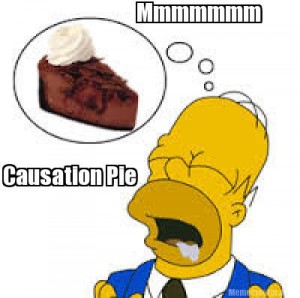Your humble blogger hated chemistry in high school. It was material that refused to sink into his brain, and he was glad to be rid of it as soon as a diploma was in hand. A recent unpublished Court of Appeal opinion, however, has me thinking that I might want to dust off the old textbook.
In the case of South Cost Framing v. WCAB, the Court of Appeal ordered that the findings of the workers’ compensation Judge and Workers’ Compensation Appeals Board be reversed, and that an order be entered that applicant’s family is to take nothing by their claim for death benefits.
The non-chemistry facts are pretty simple: applicant, who had a history of difficulty sleeping, injured his back, head, neck, and check in 2008 when he fell from a roof. His primary treating physician prescribed a list of medication for his work injury, but his personal physician had also prescribed additional medications in 2009.
Sadly, the injured worker died as a result of an apparent overdose, and his wife and three minor children filed a claim for death benefits. The legal theory was that the drugs prescribed for the industrial injury, or perhaps the interplay between the two, caused his death.
The case proceeded to an AME, who found, in his report, that those drugs prescribed to treat applicant’s industrial injury were in such a low dose that they could not have contributed to the death. On the other hand, those drugs prescribed for the non-industrial anxiety and sleep loss, were “found in excess of what would be normally considered peripheral blood concentrations.”
At his deposition, the doctor was repeatedly pressed to make a determination as to what percentage of the cause of the death could be attributed to the industrial medication. While comparing an attempt to quantify the percentage to throwing a dart at a dart board while blindfolded, the AME did analogize the industrial-injury medication to crumbs and crust of the “causation pie.”
However, the AME maintained his position that the applicant’s death was the result of an additive drug interaction between two drugs prescribed for non-industrial purposes.
Generally speaking, for a death to be compensable, it doesn’t have to be exclusively caused by industrial factors. Of course, death on the jobsite usually means there is a compensable claim, but the theory can be stretched from pretty far away from the factory floor to a reasonable tie in to work.
Labor Code section 3600 restricts compensability in cases of death when the injury proximately causes death, and, in this case, it’s hard to say that the death of the worker was proximately caused by the injury, when it was the interplay of drugs prescribed for non-industrial causes that resulted in his death. The fact that the AME conceded that it was possible that there was a “crumb” in the causation pie does not satisfy the proximate cause test.
After all, had he taken no drugs for pain management of his industrial injury, it appears that the injured worker is more likely than not to have suffered the same fate.
So, what can we get from this case? Well, unfortunately, this is an unpublished decision, so we’re not going to get any sort of authority. However, generally speaking, we can see that the Court of Appeal is disinclined to allow the imposition of death-benefits liability for a case where industrial injury proves such a small factor in the injured worker’s death.

